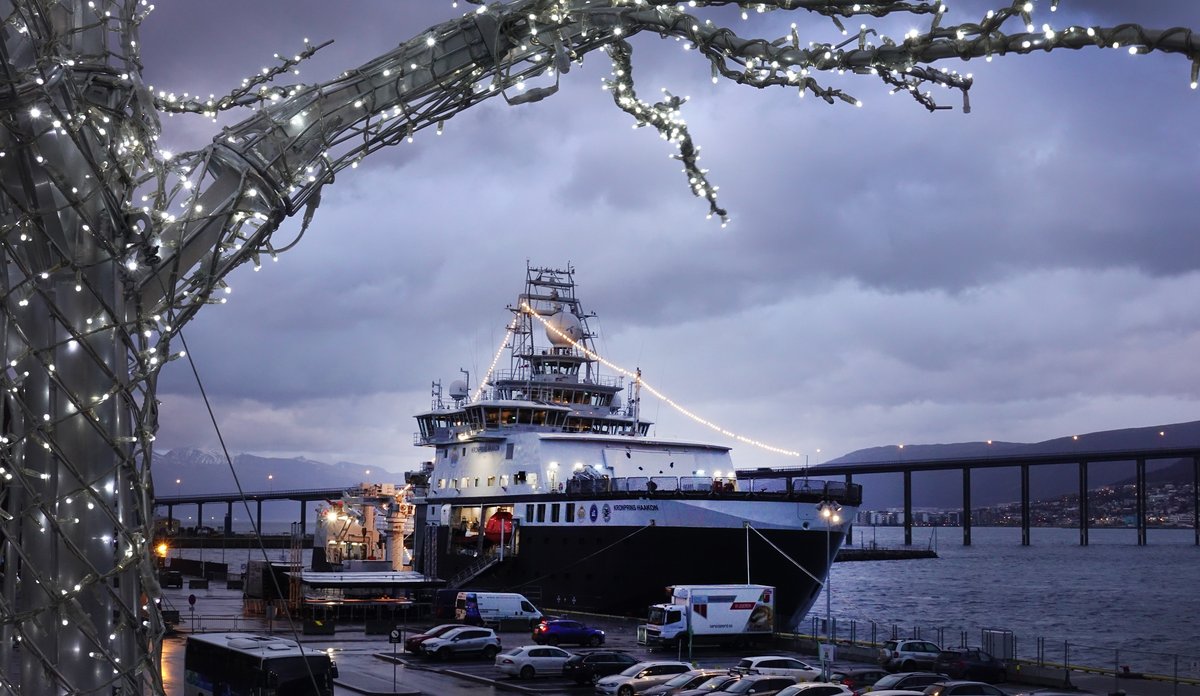For Norway’s newest icebreaker, it’s (almost) to the pole and back
Thicker-than-expected ice prevented the Kronprins Haakon from reaching the North Pole.

Norway’s most advanced polar-research vessel will end its summer expedition to the Arctic early after thick ice prevented the Kronprins Haakon from reaching the North Pole.
Built at a cost of 1.5 billion kroner ($175 million), the Kronprins Haakon entered into service last August. This January, it completed an expedition to Antarctica.
After leaving Tromsø on July 3, the third expedition had concentrated on collecting samples from the waters north of Svalbard. It was due to culminate with a sail-over of the North Pole before returning to Tromsø.
[Norway unveils most advanced research vessel to sail the Arctic Ocean]
Making the North Pole was considered feasible for the Kronprins Haakon; it is designed to be able to sail in year-round in ice as thick as two meters and sea trials last year suggested it was capable of sailing in even thicker ice.
It reached a latitude of 84° 40′N on July 13, but decided to turn back after meeting first-year ice measuring up to 1.5 meters thick, patches of multi-year ice and little sign of thawing.
Despite not reaching the North Pole, the expedition accomplished most of its scientific goals. The ship itself, according to Hans Christian Eilertsen, a biologist with the Universitetet i Tromsø and the expedition’s scientific leader, performed as expected.
“Sailing to the North Pole in ice isn’t a walk in the park, even if we’re talking about a big ship. You are always going to have problems, be they technical or logistical,” he said.
[The launch of a new British polar research vessel is hailed as a ‘milestone’]
Turning back where it did meant the Kronprins Haakon fell short of the 86° 14′N attained by Norwegian polar explorer Roald Amundsen aboard the Fram in 1895, leaving that mark unbeaten as the northernmost point reached by a Norwegian vessel.
But while the Fram sailed further, the Kronprins Haakon, according to Eilertsen did it better, at least as far as the 35 scientists who were on board; in addition to state-of-the-art research facilities, the ship has a range of modern amenities, including an exercise room, a lounge and a hot tub.
“Our trip was probably a lot more comfortable,” he said.